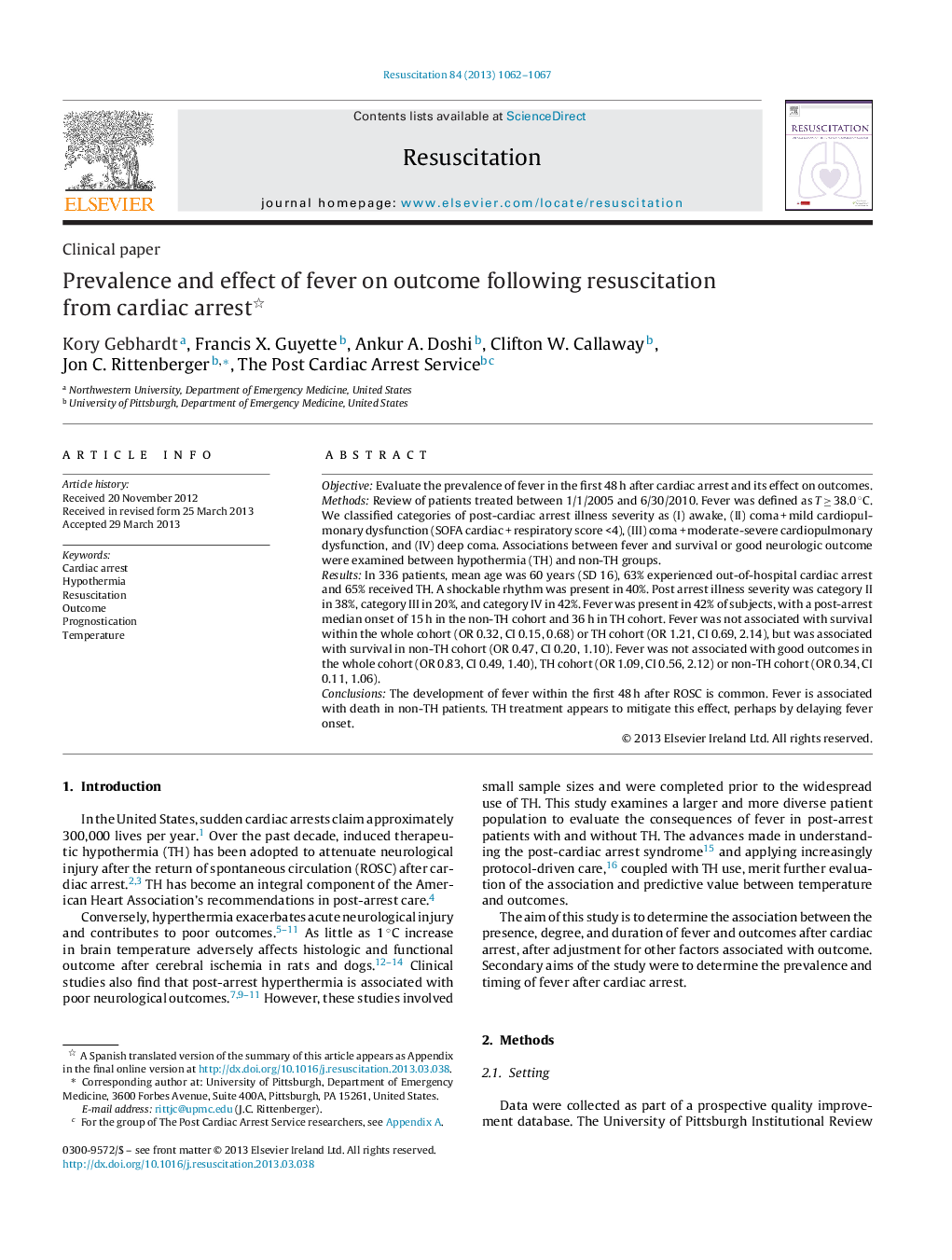| Article ID | Journal | Published Year | Pages | File Type |
|---|---|---|---|---|
| 3008247 | Resuscitation | 2013 | 6 Pages |
ObjectiveEvaluate the prevalence of fever in the first 48 h after cardiac arrest and its effect on outcomes.MethodsReview of patients treated between 1/1/2005 and 6/30/2010. Fever was defined as T ≥ 38.0 °C. We classified categories of post-cardiac arrest illness severity as (I) awake, (II) coma + mild cardiopulmonary dysfunction (SOFA cardiac + respiratory score <4), (III) coma + moderate-severe cardiopulmonary dysfunction, and (IV) deep coma. Associations between fever and survival or good neurologic outcome were examined between hypothermia (TH) and non-TH groups.ResultsIn 336 patients, mean age was 60 years (SD 16), 63% experienced out-of-hospital cardiac arrest and 65% received TH. A shockable rhythm was present in 40%. Post arrest illness severity was category II in 38%, category III in 20%, and category IV in 42%. Fever was present in 42% of subjects, with a post-arrest median onset of 15 h in the non-TH cohort and 36 h in TH cohort. Fever was not associated with survival within the whole cohort (OR 0.32, CI 0.15, 0.68) or TH cohort (OR 1.21, CI 0.69, 2.14), but was associated with survival in non-TH cohort (OR 0.47, CI 0.20, 1.10). Fever was not associated with good outcomes in the whole cohort (OR 0.83, CI 0.49, 1.40), TH cohort (OR 1.09, CI 0.56, 2.12) or non-TH cohort (OR 0.34, CI 0.11, 1.06).ConclusionsThe development of fever within the first 48 h after ROSC is common. Fever is associated with death in non-TH patients. TH treatment appears to mitigate this effect, perhaps by delaying fever onset.
